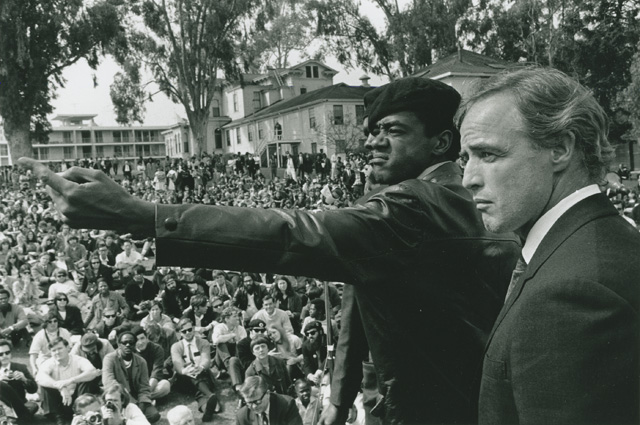In August of 2014, 80-year-old Bay Area activist and photojournalist Jeffrey Blankfort attended a protest against an Israeli Zim line ship headed for the port of Oakland.
Meeting at the West Oakland BART station, Blankfort and others protesting Israel’s actions in Gaza encountered young members of the black community organizing in opposition to events in Ferguson, Miss. as a part of the Black Lives Matter movement. The two groups marched to the Oakland port together in combined protest of Israeli and U.S. violence, of oppression and militarization. The moment crystallized the connection between African-American and Palestinian struggles in Blankfort’s mind: a connection made by the people of Ferguson and Palestine, and later by the editorial board of the New York Times.
As one who’s documented struggles of oppressed peoples both at home and abroad since the early 1960s, Blankfort echoes the similarities. “The photographs of U.S. military vehicles with Ferguson police on top as snipers was a horrifying scene, but this is what Palestinians see all the time,” Blankfort says. “Both groups feel that their lives don’t matter to those who oppress them.”
When Blankfort was given the opportunity to show his work at the African American Art & Culture Complex (AAACC) for Black History Month, he chose photographs of both the Black Panthers and Palestinian refugee camps. In the exhibit, Fight the Power, his documentation of Black Panthers protests in the 1960s and Palestinian life in Lebanon, Jordan and occupied Palestine from 1970 to 2004 elucidate the historical similarities of today’s conflicts in Ferguson and Gaza.

Fight the Power opens on Friday, Feb. 6th with a reception from 6-8pm in the Sargent Johnson Gallery of the AAACC in San Francisco. Afterward, a panel discussion on Ferguson and Gaza takes place in the AAACC theater with former Black Panther Billy X Jennings, Executive Director of the Arab Resource Organizing Center Lara Kiswani, ED.D Educational Leadership Dr. Rama Kased, and Executive Director of the AAACC Mohammed Bilal. Blankfort’s exhibit runs through Feb. 28. Visit the AAACC website for more information.
Read KQED Arts’ interview with Jeffrey Blankfort and visit Blankfort’s website to learn more about his work.